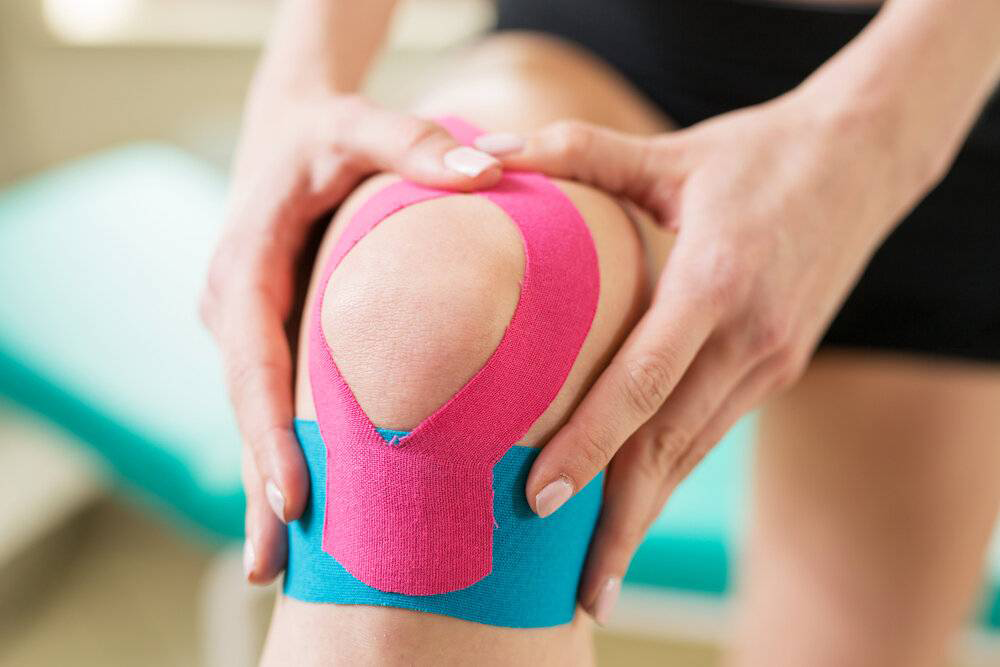You’ve probably seen athletes with brightly colored stripes down their shoulders, or white tape wrapped tight around ankles. Maybe you’ve used some yourself and thought, “Is this even doing anything?” The truth is—athletic tape works, but only when the right type is used for the right reason.
At TruStrength Performance and Rehab, we use tape daily to support injured joints, improve movement, reduce pain, and help people—from weekend warriors to serious athletes—get back in the game. But not all tape is created equal. Let’s break down the different types of athletic tape, what they’re actually meant for, and how they help.
First, What Does Athletic Tape Actually Do?
Let’s get this straight: athletic tape isn’t just decorative, and it’s not a magic fix. But when used properly, it can:
- Support injured or unstable joints
- Reduce pain and swelling
- Improve posture and muscle activation
- Prevent further injury
- Enhance body awareness (a.k.a. proprioception)
Think of tape as a reinforcement—like putting rebar in concrete. It doesn’t replace strength or stability, but it gives your body the edge it needs to perform better and heal smarter.
The 5 Most Common Types of Athletic Tape (And When to Use Each)
1. Kinesiology Tape (K-Tape)
What it is: That stretchy, colorful tape you see on athletes’ shoulders, backs, and knees? That’s kinesiology tape. It was designed to mimic the elasticity of skin and muscle, allowing for full movement while offering support.
Why we use it at TruStrength:
- Reduces pain by decompressing tissue and improving circulation
- Helps with swelling and lymphatic drainage
- Can gently cue muscles to activate or relax
- Great for shoulder instability, knee tracking issues, low back pain, and more
When to use it: During activity, post-injury recovery, or even for posture re-education. It’s flexible, breathable, and lasts several days—even through workouts and showers.
Bonus: It doesn’t restrict movement, so it’s ideal for dynamic sports like CrossFit, running, or basketball.
2. Rigid (White) Athletic Tape
What it is: This is the OG—classic white athletic tape. It’s stiff, non-elastic, and designed to limit movement in specific joints.
Why we use it at TruStrength:
- Provides strong joint stability
- Used for immobilizing injuries like sprains
- Great for ankles, wrists, and fingers in high-impact sports
- Prevents excessive joint movement during activity
When to use it: Before a game or training session if you need extra joint protection or post-injury support. But remember: because it restricts motion, it’s not for everyday use or long-term wear.
Pro tip: We often use pre-wrap underneath to protect the skin and make removal easier.
3. Elastic Adhesive Tape (EAB)
What it is: Think of this as a hybrid between rigid tape and kinesiology tape. It has stretch, but not as much as K-tape, and it provides moderate support with a little give.
Why we use it at TruStrength:
- Ideal for compression and support
- Great for wrapping over muscles or joints that need flexibility with stability
- Often used in rugby, football, and contact sports
When to use it: For soft tissue injuries that still need movement—like calf strains or quad tightness. It’s supportive, but won’t restrict you completely.
4. Cohesive Bandage (Self-Adhering Tape)
What it is: This tape sticks to itself, not your skin. No adhesive means it’s gentle, reusable, and often used with padding underneath.
Why we use it at TruStrength:
- Great for quick support during sports or in-clinic taping
- Can be used with ice packs or padding
- Won’t pull hair or irritate the skin
When to use it: Short-term compression or quick wraps—especially over socks or sleeves. It’s popular for field-side emergencies or practice sessions when speed matters.
5. Leukotape and Cover-Roll
What it is: A dynamic duo: Cover-Roll goes on the skin first to protect it, then Leukotape (a super sticky, rigid tape) is layered on top for strong, targeted support.
Why we use it at TruStrength:
- Used in corrective taping, especially for posture or patella tracking
- Extremely durable—sticks like crazy
- Allows for precise biomechanical corrections
When to use it: Postural support, shoulder stabilization (like scapular taping), and knee mechanics corrections. This is more of a clinician-applied technique, so it’s one we recommend doing with a pro—like, you know, us.
So… Which Tape Do You Actually Need?
It all depends on what’s going on with your body. For example:
- Got a rolled ankle? Rigid tape is your go-to.
- Struggling with knee pain from squats? Kinesiology tape could help with patellar alignment.
- Tweaked your back in deadlifts? Elastic tape + movement correction could speed up your recovery.
- Want to improve posture without a brace? Leukotape for scapular support works wonders.
But here’s the kicker: taping only works if it’s part of a bigger plan. At TruStrength Performance and Rehab, we don’t just slap tape on and call it a day. We evaluate movement patterns, treat the root cause, and then use taping strategically to support your goals.
Common Myths About Athletic Tape (Let’s Clear Them Up)
“Tape will fix my injury.”
Nope. Tape helps, but it’s not a standalone treatment. You need proper rehab and strength work.
“If it hurts, just tape it.”
Wrong again. Pain is your body’s signal. Covering it up without figuring out why it hurts is like putting duct tape on a warning light.
“All tape is the same.”
Hard no. Using rigid tape when you need dynamic support can actually make things worse. That’s why knowing the type—and how to apply it—is crucial.
How We Use Athletic Tape at TruStrength
Our approach is hands-on and results-driven. Here’s how we incorporate taping into your recovery plan:
- Assessment First – We identify the source of the problem—not just the symptoms.
- Movement Correction – We integrate mobility work, strength training, and neuromuscular re-education.
- Targeted Taping – We use the right tape, applied the right way, for maximum impact.
- Follow-Up – Taping is monitored, adjusted, and phased out as you heal and grow stronger.
We also teach you how to apply tape yourself when needed, so you’re not dependent on anyone else.
Should You Be Using Tape?
If you:
- Train hard and want to prevent injuries
- Are recovering from a sprain or muscle strain
- Experience recurring pain in the same joint or muscle
- Want to support posture without relying on braces
Then yes, tape can help. But only if it’s applied correctly and used within a full rehab plan. Let us guide you.
Ready to Train Smart and Stay Strong?
At TruStrength Performance and Rehab, we combine movement science, manual therapy, and proven techniques (like taping) to get you out of pain and perform better than ever.
Book a consultation with us and let’s build a recovery plan tailored to you—with the right tape, the right treatment, and results that last.



